Today marks the 75th anniversary of the Japanese attack on the American naval base at Pearl Harbor near Honolulu, Hawaii. Here are ten things you should know about the event that propelled the U.S. into World War II:
1. In July 1941, Franklin D. Roosevelt’s administration joined with the Netherlands and Great Britain in cutting off Japanese assets in their countries and imposing stringent economic restrictions, cutting off oil and other raw materials Japan needed for war production. The hope was that by imposing an oil embargo the U.S. could deter Japan from engaging in further aggression in Asia. At the time Japan was dependent on America’s oil, but also believed that war with the U.S. was inevitable. Because they needed access to oil and other resources, Japan decided to seize the overseas territories controlled by the U.S., the U.K., and the Netherlands.
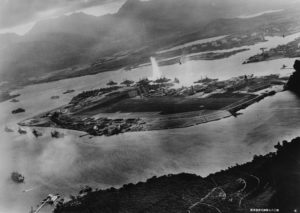
2. On the morning of December 7, 1941, Japan launched a series of attacks on the U.S.-held Philippines, Guam, and Wake Island, and on the British Empire in Malaya, Singapore, and Hong Kong. The Japanese also attacked Pearl Harbor, believing that by destroying the American naval fleet in the Pacific theater they would be able to prevent the U.S. from interfering with Japanese expansion. As military historian Victor Davis Hanson explains, “In short, for the Japanese, December 1941 seemed a good time to attack the United States—a provocation that would either likely be negotiated or end in a military defeat for the U.S.”
3. In the two-hour bombing campaign that took place on the morning of December 7, 1941, Japanese forces were able to damage 159 aircraft and destroy 169 others. Additionally, three cruisers and three destroyers were damaged, and five auxiliaries were damaged or destroyed. All eight U.S. Navy battleships were damaged—four were sunk, but all except the Arizona were later raised. (The three aircraft carriers of the U.S. Pacific Fleet were out to sea on maneuvers.)
4. The attack killed 2,403 American service members and wounded 1,178 others. Half of all those killed were aboard the battleship USS Arizona, which remains sunken in Pearl Harbor. An additional 68 civilians died, and 35 were wounded.
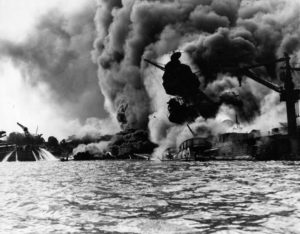
5. Onboard the battleship USS Arizona, there were 37 confirmed pairs or trios of brothers. Of these 77 men, 62 were killed, and 23 sets of brothers died. Only one full set of brothers survived. Additionally, the only father and son pair aboard the ship died during the attack. (Although the practice of immediate family members serving on the same ship was discouraged during World War II, is has never been prohibited.)
6. The attack on the naval base was conducted by 353 fighter planes, bombers, and torpedo planes, which were launched from six Japanese aircraft carriers. Five Japanese mini submarines also participated in the battle. Altogether, the Japanese losses were relatively light: 29 aircraft destroyed; 4 mini subs sunk and 1 grounded; 64 men killed and 1 captured.
7. The day after the attack, Franklin D. Roosevelt gave a brief speech before Congress. In the address—which included the famous opening line that December 7th was a “date which will live in infamy”—Roosevelt asked Congress to declare war on Japan.
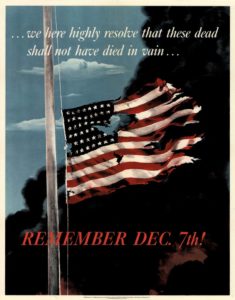
8. Because the attack caught the U.S. completely off-guard, many people placed blame on the government and military leaders, accusing them of either incompetence or involvement in a conspiracy. Between 1941 and 1946, the U.S. government made nine official inquiries into the attack, and a tenth in 1995. No solid evidence has ever been found to support the fringe theory that American leadership knew of the attack, though incompetence and ill-preparation were cited in the investigations.
9. If the U.S. military had been warned of the impending attack, the outcome could have been even worse for the American military. As many historians now point out, if they had been aware of a pending attack the U.S. Navy would have attempted to face the Japanese navy in open waters. The superiority of the Japanese fleet would have still prevailed and led to many of the ships being sunk and unrecoverable, setting the U.S. military and war effort back about two years.
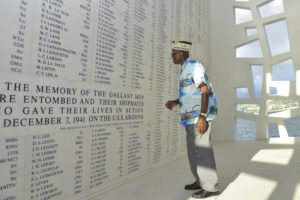
10. Hara Chuichi, a Japanese commander of a carrier group that helped carry out the attack, later claimed, “we won a great tactical victory at Pearl Harbor and thereby lost the war.” The Japanese attacked with the belief that it was strategically necessary to disable American battleships. But battleships were, by this point, becoming less important than aircraft carriers—and all three of the U.S. Pacific Fleet’s aircraft carriers were away from Pearl Harbor at the time of the attack. The Japanese leadership also underestimated the resolve of the American people. As Jeffery Record says, “The Japanese believed they were racially and spiritually superior to the Americans, whom they regarded as an effete, creature-comforted people divided by political factionalism and racial and class strife.”
—
Joe Carter is an adjunct professor of journalism at Patrick Henry College, an editor for several organizations, and the author of the NIV Lifehacks Bible.
Photo Credit: Sailors stand amid wrecked planes at the Ford Island seaplane base, watching as USS Shaw (DD-373) explodes in the center background, 7 December 1941. USS Nevada (BB-36) is also visible in the middle background, with her bow headed toward the left. Official U.S. Navy photograph.


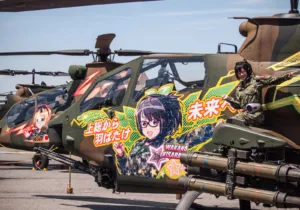
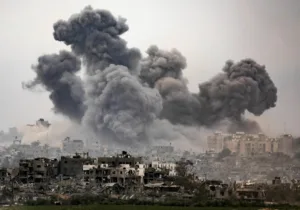
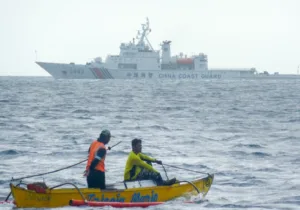


 Live in the DC area? Sign-up for Providence's in-person events list!
Live in the DC area? Sign-up for Providence's in-person events list!